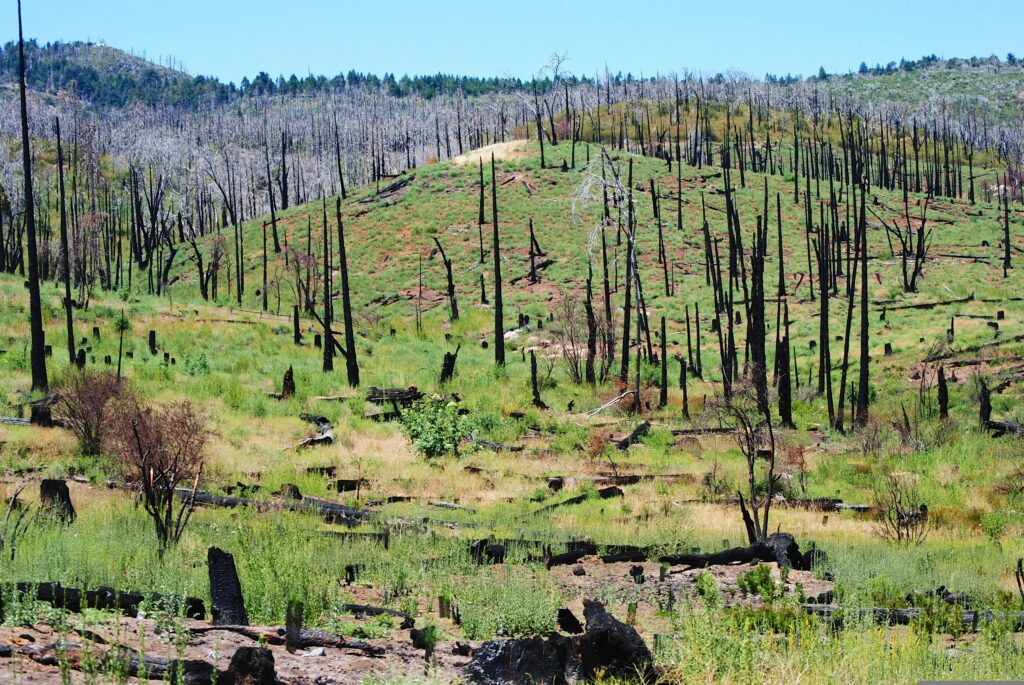If you work in supply chains, sustainability, or compliance, chances are the letters EUDR have already made their way into your inbox, your meetings, and probably your worries. The EU Deforestation Regulation changes how companies prove where their products come from and what impact they have on forests.
EUDR reporting isn’t just about ticking boxes or sending spreadsheets to Brussels. It’s about showing that your business can trace the origin of materials like coffee, cocoa, soy, or wood down to the exact plot of land, prove they were produced legally, and confirm that no deforestation has taken place since December 2020.
Sounds intense? It is. But it’s manageable once you break it down. This guide walks through what EUDR reporting actually involves, how to structure your work, and what digital tools can make it easier.
What EUDR Reporting Actually Means
The EU Deforestation Regulation (EUDR) is designed to stop products linked to deforestation from being sold or exported within the EU. To comply, companies need to collect data, run risk assessments, and submit a Due Diligence Statement (DDS) before placing a product on the market.
The DDS acts as your company’s legal declaration that the goods are deforestation-free and legally produced. Think of it as saying, “We’ve checked, we’ve verified, and here’s the proof.”
EUDR reporting sits at the heart of this process. It’s how you record and present the evidence that your business is compliant. It covers everything from GPS coordinates and supplier details to risk evaluation and mitigation actions.
Why Businesses Struggle With EUDR Reporting
For many companies, the challenge isn’t understanding the regulation itself – it’s managing the details that come with it. Each product can have dozens of suppliers, each supplier a different data format, and each shipment a new set of coordinates or certificates to verify.
EUDR reporting demands precision. You need to trace raw materials to their exact origin, prove legality, and show that no deforestation occurred after the 2020 cutoff date. Doing this manually can eat up time, money, and patience. Even well-organized teams find themselves juggling hundreds of files, trying to connect documents across departments, and worrying about whether their records would hold up in an audit.
That’s where technology makes a real difference. The right tools can take what feels like an impossible data maze and turn it into a structured, transparent process.

How We Help Businesses Simplify EUDR Reporting
Au EUDR.co, we’ve built a platform designed to take the stress out of compliance. We know that managing supplier data, verifying geolocation coordinates, and preparing due diligence statements can quickly turn into a full-time job. That’s why our system automates most of the heavy lifting, helping teams stay compliant without drowning in spreadsheets.
Our platform brings together everything you need in one place. You can upload supplier and product data, verify field information using satellite-based monitoring, and generate complete audit-ready reports in just a few clicks. Each insight is verified and dependable, giving you confidence that every document you submit stands up to scrutiny.
We’ve also made it affordable and accessible for businesses of all sizes. Whether you’re a large operator managing hundreds of shipments or an SME preparing for your first compliance cycle, the platform adapts to your workflow. Our automated checks, smart data collection tools, and real-time risk analysis make EUDR reporting faster, easier, and more precise.
What We Focus On:
- Satellite-based monitoring that confirms deforestation-free sourcing
- Automated data collection and verification to replace manual tracking
- Accurate, traceable reports aligned with EU Information System requirements
- Flexible pricing and intuitive dashboards designed for growing teams
We built this platform for the real world – where deadlines are tight, supply chains are complex, and compliance teams don’t have endless time or resources. By combining automation with verified data and clear reporting, we help you move from uncertainty to confidence in every EUDR submission.

How to Get EUDR Reporting Right: Step-by-Step
EUDR compliance can feel complicated, but the process becomes manageable when broken into clear steps. Here’s how to move from confusion to control – one stage at a time.
Step 1: Know Your Role in the Process
Before doing anything, figure out who you are under the regulation. The EUDR defines two main categories of businesses that must comply:
- Opérateurs place in-scope products on the EU market for the first time or export them outside the EU.
- Commerçants buy and resell in-scope products already placed on the market without transforming them.
Your role determines the level of responsibility you hold. Operators must complete the full due diligence cycle, while traders, especially smaller ones, can often rely on upstream documentation but still need to maintain traceability records.
Small and micro businesses get more flexibility. They have until June 30, 2026, to comply fully, while large and medium operators must meet the rules by December 30, 2025.
Step 2: Identify Which Products Fall Under EUDR
EUDR applies to seven key commodities and their derivatives:
- Bétail
- Cocoa
- Coffee
- Palm oil
- Soy
- Rubber
- Wood
Each of these commodities has specific HS codes listed in the regulation’s Annex I. If your business deals with products that include these materials: even partially, like chocolate, furniture, or leather goods, you’re within scope.
Mapping your products and their supply chains is essential. For many companies, this means tracing ingredients or materials back several layers until you reach the original producer or exporter.
Step 3: Collect the Right Data
Once you know which products are covered, start gathering the data required for compliance. EUDR reporting isn’t about general supplier info – it’s about verified evidence. You’ll need to collect geolocation coordinates for every plot where the commodity was produced, along with production or harvest dates that prove the land wasn’t cleared after December 31, 2020. Include detailed product descriptions with HS codes and quantities, and keep accurate records of supplier and customer information such as names, addresses, and contact details.
You also need to show proof of legality, including land ownership documents, harvesting permits, and compliance with labor or environmental laws. Finally, gather evidence that the products are deforestation-free, such as satellite imagery or maps showing no forest loss. It may sound like a lot, but every part of your supply chain must be traceable and verifiable. Missing data increases your risk level and makes the next step, risk assessment, far more complicated.
Step 4: Assess Your Risks
Once your data is in place, the next task is to determine whether there’s a negligible risk of deforestation or illegality. This stage requires careful, evidence-based analysis rather than assumptions.
A solid risk assessment should address:
- Country-level risk: Deforestation trends, governance strength, law enforcement, and corruption levels.
- Supply chain risk: The number of intermediaries, potential for product mixing, and supplier reliability.
- Supplier-level risk: Land rights, labor standards, indigenous rights, and historical deforestation activity.
- Documentation risk: Missing or unverifiable information, inconsistent records, or unclear ownership.
If any part of your analysis suggests more than negligible risk, you can’t proceed until mitigation actions are taken.
Step 5: Mitigate the Risks
Mitigation means taking corrective actions before a product enters or leaves the EU market. These steps help lower risk to a negligible level and show that your company has done proper due diligence. You might need to request additional evidence from suppliers, commission third-party audits or on-site inspections, or use satellite imagery to confirm land use.
In some cases, supporting suppliers in improving data accuracy or traceability systems is enough; in others, you may need to change suppliers entirely if compliance can’t be verified. The goal isn’t to punish partners but to close information gaps before authorities find them. Keep detailed records of every mitigation step, as auditors will want to see how you reached your final conclusion of negligible risk.
Step 6: Submit the Due Diligence Statement (DDS)
After data collection, risk evaluation, and mitigation, you’re ready to submit your official Due Diligence Statement (DDS) through the EU’s TRACES Information System. Your DDS should include company and product details, geolocation data, the results of your risk assessment, and a clear confirmation that the products meet all EUDR requirements.
Each DDS receives a unique reference number that must be linked to the relevant shipment and shared with downstream partners. Submitting the DDS is not just another formality – it’s a legal declaration that your products are fully compliant. Inaccurate, incomplete, or late submissions can lead to investigations or penalties, so precision always matters more than speed.

Common Mistakes to Avoid
Even with solid systems and clear workflows, many companies still fall into the same traps when managing EUDR reporting. These mistakes don’t usually come from negligence – they come from underestimating how complex real-world supply chains can be. Recognizing these issues early can save your team time, money, and a lot of unnecessary stress.
1. Overreliance on Certifications
Certifications like FSC or RSPO can be helpful indicators, but they’re not substitutes for due diligence. The EUDR requires you to verify the actual data behind those certificates, including where the product came from and how it was produced. A valid certificate doesn’t automatically prove compliance if it lacks verifiable geolocation or legality evidence.
2. Starting Too Late
EUDR compliance isn’t something you can finish in a few weeks. Mapping supply chains, setting up data systems, and training staff can take months. Many companies underestimate the preparation needed until the first reporting deadline arrives. Starting now allows time for mistakes, adjustments, and supplier engagement before enforcement kicks in.
3. Treating Risk Assessment as a Checkbox
Authorities expect detailed, logical reasoning behind every risk conclusion. A generic “low-risk” statement without evidence won’t hold up in an audit. Document each step of your analysis, explain why you rated certain suppliers or regions as low or high risk, and show what data you used to reach those conclusions.
4. Poor Documentation
When records are spread across different drives, emails, or departments, they’re not just hard to find — they’re a liability. If only one person knows how to access key documents, that’s a built-in compliance risk. Create a shared, structured archive with clear naming conventions, version control, and backup access.
5. Ignoring Ongoing Update
Compliance doesn’t end when you submit your Due Diligence Statement. Regulations evolve, supplier networks shift, and deforestation patterns change. Companies that treat EUDR as a one-time task often fall out of compliance months later. Keep your systems active, run regular data checks, and track new alerts from satellite or government databases to stay ahead.
Getting these basics right may not sound glamorous, but they form the foundation of sustainable compliance. When your documentation is organized, your data verified, and your team trained, EUDR reporting stops being a constant worry and starts becoming a routine part of doing responsible business.
Building a Smarter Compliance Culture
At its core, EUDR reporting isn’t just about paperwork – it’s about trust. Regulators want proof that your supply chain can stand up to scrutiny, and customers want the same thing. Businesses that treat EUDR as part of a broader sustainability strategy will benefit most. They gain better visibility, reduce risks, and strengthen the credibility of their ESG reports.
To make that happen, bring your compliance, procurement, and sustainability teams together early and make sure they’re aligned on goals. Invest in traceability tools that can grow with your operations instead of relying on temporary fixes. Build long-term partnerships with suppliers who can provide reliable, verifiable data. And most importantly, make EUDR documentation a steady part of your business routine, not a last-minute scramble before deadlines.
Final Thoughts
EUDR reporting can feel overwhelming at first, but it doesn’t have to stay that way. Once you understand the structure: data, risk, mitigation, documentation – the rest becomes a process you can refine and scale.
Yes, it’s technical. Yes, it requires effort. But it’s also a chance to build a supply chain you can actually trust. The companies that start preparing now, testing their systems and training their teams, will have a much smoother path when enforcement begins.
Treat EUDR reporting as more than a compliance headache. It’s your opportunity to prove that sustainability and accountability can go hand in hand, and that doing the right thing can also make good business sense.
FAQs
1. What is EUDR reporting?
EUDR reporting is the process companies follow to prove that their products are deforestation-free and legally produced before being placed on or exported from the EU market. It involves collecting supply chain data, assessing risk, mitigating any issues, and submitting an official Due Diligence Statement (DDS) through the EU’s TRACES Information System.
2. What kind of data do companies need to collect?
You’ll need verifiable evidence about your products, including geolocation coordinates of production plots, production or harvest dates, supplier and buyer details, proof of legality, and confirmation that no deforestation has occurred since December 31, 2020. All this data must be stored for at least five years and be ready for inspection.
3. What is a Due Diligence Statement (DDS)?
A DDS is a formal declaration submitted to the EU’s TRACES system confirming that your products meet EUDR requirements. It includes details about your company, product origins, risk assessments, and mitigation actions. Each DDS receives a unique reference number that must be linked to every relevant shipment.
4. What happens if a company fails to comply?
Non-compliance can lead to severe consequences, including fines of up to 4% of annual EU turnover, shipment blocks, or temporary bans from placing products on the market. Beyond financial penalties, companies also risk reputational damage and loss of trust with clients or regulators.
5. Can certifications like FSC or RSPO replace EUDR due diligence?
No. Certifications can support your compliance process, but they don’t replace it. The EUDR requires verified data and evidence specific to your supply chain. Certifications can reduce perceived risk but don’t absolve companies from performing their own due diligence.


